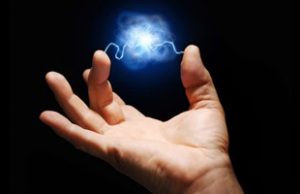Enabled Nanotechnologies for Energy Harvesting
News category: Nanotech
 Nanotechnology research, development and application are relevant and potentially beneficial to almost every facet of our lives, including health, energy, infrastructure, information technology, transportation, food safety, environmental science, as well as defence. Many benefits of nanotechnology rely on the possibility to alter the structures of materials at extremely small scales to achieve specific properties which improve the materials’ capabilities.
Nanotechnology research, development and application are relevant and potentially beneficial to almost every facet of our lives, including health, energy, infrastructure, information technology, transportation, food safety, environmental science, as well as defence. Many benefits of nanotechnology rely on the possibility to alter the structures of materials at extremely small scales to achieve specific properties which improve the materials’ capabilities.
Above and beyond the traditional energy sources (e.g. petroleum, coal, hydraulic, natural gas and nuclear) and modern alternatives (e.g. solar, geothermal, biomass, nuclear, wind, and hydrogen) nanotechnologies can greatly aid in meeting the future demand for energy harvesting. Some nanotechnologies can operate without a traditional electricity source and can draw the energy they require from the environment in which they operate. This article covers various approaches for nanotechnologies to meet the future demand for energy harvesting.
Scientists are close to using people as device chargers. Nano generators can harvest energy from the human body and that energy can power wearable and implantable devices such as pacemakers, muscle sensors and tumour detectors. The human body generates a great amount of mechanical energy that is available for harvesting and potential utilisation, through processes such as body movement, respiration and blood flow. The body also generates thermal energy in the form of body heat and biochemical energy from physiological processes and metabolism. A bio-nano generator is an electrochemical device which works like a fuel cell, except it draws power from blood glucose in a living body. An enzyme is capable of stripping glucose of its electrons, freeing them for use in electrical devices. The electricity generated is able to power devices embedded in the body. The design and development of appropriate energy-harvesting strategies for miniaturised powering packages is therefore critical.
Piezoelectric generation is the ability of certain materials to generate an electric charge in response to applied mechanical stress. Piezoelectric ceramic thin film nanomaterials transform miniature movements of the human body into electrical energy. Although its definition may include any type of energy harvesting devices using nano-structures to convert various types of ambient energy (e.g. solar power and thermal energy), a piezoelectric nanogenerator is an energy harvesting device capable of converting external kinetic energy into electrical energy via action by a nano-structured piezoelectric material.
Bio-mechanical forces produced by the human body are able to produce non-polluting energy. This technology can be used to power an LED and can operate touchable flexible displays. The nanogenerator gives a high output voltage and the output current is small and, because of this, not only can it be used as a potential power source but also as a sensor for measuring temperature variation.
Among various piezoelectric materials studied for nanogenerators, much research has focused on materials with wurtzite structure, a crystal structure for various binary compounds. The greatest advantage of these materials arises from the cost-effective fabrication technique – hydrothermal synthesis. These flexible nanogenerators, that efficiently convert mechanical energy into electrical energy, have been extensively studied because of their great potential for driving low-power personal electronics and self-powered sensors.
The demand for energy has not only increased, but the size and shape of energy sources have also adapted and evolved to meet the challenges presented by an electronically evolving age. As a result of the increasing requirement for inexpensive renewable energy sources, organic-based energy harvesters have been introduced. A team of researchers at Jadavpur University in Kolkata, India, started recycling fish by-products into piezoelectric energy harvesters. The scientists’ concept was to create a bio-piezoelectric nanogenerator or energy harvester out of fish scales. Fish scales contain collagen fibres that generate an electric charge in response to mechanical stress. It also has the potential for portable electronics with reduced e-waste elements. Scientists are thinking of various ways to put such inedible by-products to good use, especially food waste.
Global warming and the resultant energy crisis has motivated scientists to search for renewable and green energy resources in order to ensure sustainable development of our human civilization. Nanotechnologies will significantly assist in meeting the future demand for energy harvesting. The goal of energy-harvesting technologies is to develop nanogenerators which operate over a broad range of conditions for extended time periods with high reliability. The discovery of nanogenerators is one of the top ten world discoveries in science, according to academics from the Chinese Academy of Science. Their discovery could have equal importance as the invention of mobile phones in 10 to 30 years, according to the New Scientist. Nanogenerators are in the top six future and emerging technologies selected by European Commission for support in the next 10 years.
